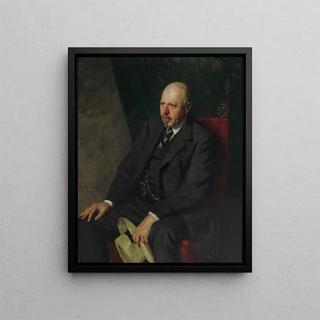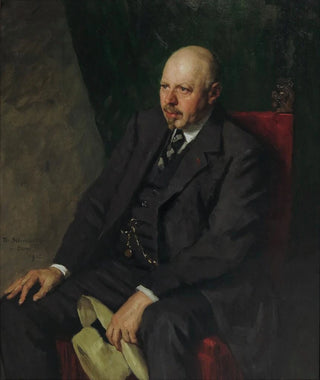Art print | Anton Caspar Rudolph Dreesmann 1854-1934 - Thérèse Schwartze Source: Reproduction | Anton Caspar Rudolph Dreesmann 1854-1934 - Thérèse Schwartze


View from behind

Frame (optional)
Anton Caspar Rudolph Dreesmann 1854-1934 - Thérèse Schwartze – Captivating Introduction
The artwork "Thérèse Schwartze" by Anton Caspar Rudolph Dreesmann, created between 1854 and 1934, embodies the essence of an era when portrait painting reached new heights of intimacy and depth. This painting, through its ability to capture the soul of its subject, immerses us in a universe where art becomes the reflection of a unique personality. The depiction of Thérèse Schwartze, an iconic figure of her time, reveals not only Dreesmann's technical skills but also his talent for conveying emotions through colors and textures. This piece, beyond its simple aesthetic appeal, invites us to a profound contemplation, encouraging us to explore the subtleties of life and human identity.
Style and uniqueness of the work
Dreesmann's style is distinguished by striking realism, where every detail is meticulously crafted to bring his subjects to life. In "Thérèse Schwartze," light plays a crucial role, illuminating the model's face in a way that emphasizes her gentle and melancholic expression. The chromatic choices, subtle and harmonious, demonstrate mastery of nuances that, far from imposing themselves, blend into an atmosphere filled with serenity. The composition, both classic and innovative, reflects a search for balance between the subject and its environment, creating a visual dialogue that invites the viewer to approach and immerse themselves in the painting. Every brushstroke seems charged with intention; every shadow and light tells a story—of a woman, an era, and an artist in pursuit of truth.
The artist and his influence
Anton Caspar Rudolph Dreesmann, a prominent figure in the early 20th-century art scene, established himself through his unique approach to portraiture. Trained at the finest art schools, he quickly developed a style that combines tradition and modernity, influenced by the great masters of the past while seeking to express his own vision. His work reflects a time when individualism began to assert itself, and his portraits, often imbued with melancholy,

Matte finish

View from behind

Frame (optional)
Anton Caspar Rudolph Dreesmann 1854-1934 - Thérèse Schwartze – Captivating Introduction
The artwork "Thérèse Schwartze" by Anton Caspar Rudolph Dreesmann, created between 1854 and 1934, embodies the essence of an era when portrait painting reached new heights of intimacy and depth. This painting, through its ability to capture the soul of its subject, immerses us in a universe where art becomes the reflection of a unique personality. The depiction of Thérèse Schwartze, an iconic figure of her time, reveals not only Dreesmann's technical skills but also his talent for conveying emotions through colors and textures. This piece, beyond its simple aesthetic appeal, invites us to a profound contemplation, encouraging us to explore the subtleties of life and human identity.
Style and uniqueness of the work
Dreesmann's style is distinguished by striking realism, where every detail is meticulously crafted to bring his subjects to life. In "Thérèse Schwartze," light plays a crucial role, illuminating the model's face in a way that emphasizes her gentle and melancholic expression. The chromatic choices, subtle and harmonious, demonstrate mastery of nuances that, far from imposing themselves, blend into an atmosphere filled with serenity. The composition, both classic and innovative, reflects a search for balance between the subject and its environment, creating a visual dialogue that invites the viewer to approach and immerse themselves in the painting. Every brushstroke seems charged with intention; every shadow and light tells a story—of a woman, an era, and an artist in pursuit of truth.
The artist and his influence
Anton Caspar Rudolph Dreesmann, a prominent figure in the early 20th-century art scene, established himself through his unique approach to portraiture. Trained at the finest art schools, he quickly developed a style that combines tradition and modernity, influenced by the great masters of the past while seeking to express his own vision. His work reflects a time when individualism began to assert itself, and his portraits, often imbued with melancholy,






